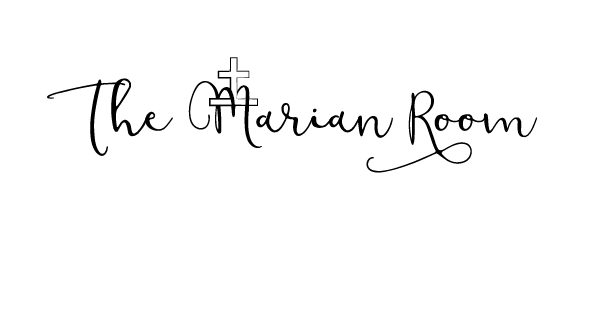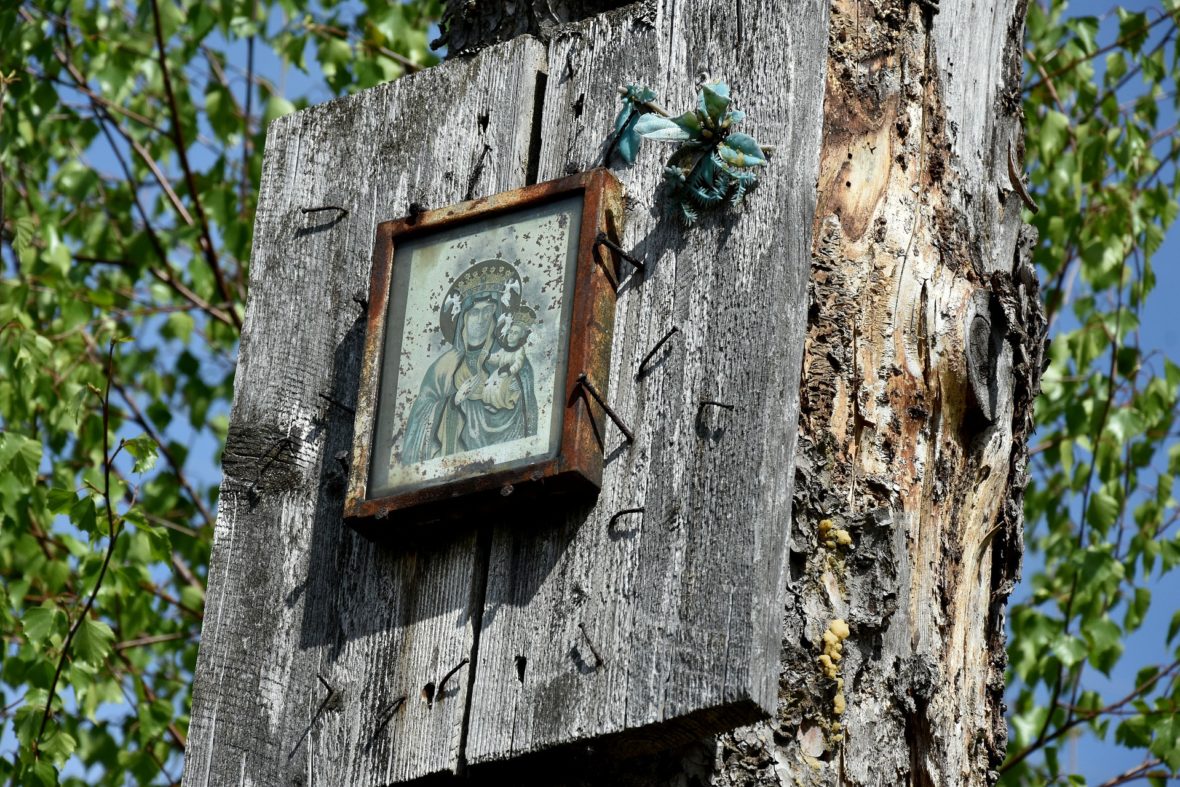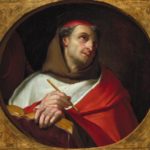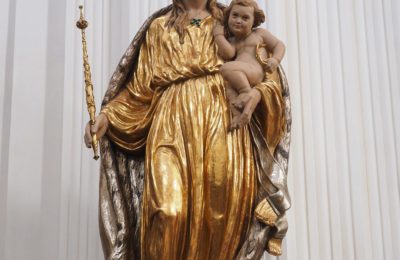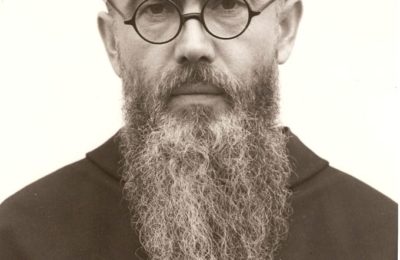“One in thy thousand statues we salute thee
On all thy thousand thrones acclaim and claim
Who walk in forest of thy forms and faces
Walk in a forest calling on one name
And, most of all, how this thing may be so
Who know thee not are mystified to know
That one cries ‘Here she stands’ and one cries ‘Yonder’
And thou went home in heaven long ago.” G.K. Chesterton
G.K. Chesterton was a devotee of the Blessed Virgin Mary, and attributed his conversion to Catholicism to her, writing that he made his final decision to convert while touring Spain before the statue of Our Lady of Montserrat. In his autobiography (circa 1936), he unashamedly declared his love for Mary in the following paragraph:
“I do not want to be in a religion in which I am allowed to have a crucifix. I feel the same about the much more controversial question of the honour paid to the Blessed Virgin. If people do not like that cult, they are quite right not to be Catholics. But in people who are Catholics, or call themselves Catholics, I want the idea not only liked but loved and loved ardently, and above all proudly proclaimed. I want it to be what the Protestants are perfectly right in calling it; the badge and sign of a Papist. I want to be allowed to be enthusiastic about the existence of the enthusiasm; not to have my chief enthusiasm coldly tolerated as an eccentricity of myself. And that is why, with all the good will in the world, I cannot feel the crucifix at one end of the town as a substitute for the little Roman Catholic Church at the other.”
And, in The Catholic Church and Conversion he makes more points on devotion to Our Lady:
“The honour given to Mary as the Mother of God is, among a thousand other things, a very perfect example of the truth to which I have recurred more than once: that even what we may call the Protestant truths were only saved by the Catholic authority. Among these is the very necessary truth of the subordination of Mary to Christ, as being after all the subordination of the creature to the Creator. Nothing amuses Catholics more than the suggestion, in so much of the old Protestant propaganda, that they are to be freed from the superstition called Mariolatry, like people freed from the burden of daylight. All the spontaneous spirituality, as distinct from the necessary doctrinal orthodoxy, is on the side of the extension and even excess of this cult. If Catholics had been left to their private judgment, to their personal religious experience, to their sense of the essential spirit of Christ and Christianity, to any of the liberal or latitudinarian tests of truth, they would long ago have exalted our Lady to a height of superhuman supremacy and splendour that might really have imperilled the pure monotheism in the core of the creed. Over whole tracts of popular opinion she might have been a goddess more universal than Isis. It is the authority of Rome that has prevented such Catholics from indulging in such Mariolatry; the strict definition that distinguished between a perfect woman and a divine Man.”
Chesterton makes it clear that the love Catholics have for Our Lady does not exceed the proper limits; she is not made into a goddess as Protestants accuse. No, devotion to her is kept in the proper parameters by Catholic teaching and Tradition, where it is clearly declared that she is who she is in relation to Christ, to her divine Son. She is not divine, but, none-the-less, is the masterpiece of God (paraphrase, St. Louis de Montfort*), the Immaculate Mother; and yes, she is quite loved by Catholics from infancy to the grave. As the Franciscan Marian saint, Fr. Maximilian Kolbe, stated:
“Never be afraid of loving the Blessed Virgin too much. You can never love her more than Jesus did.”
Yes. We must never be afraid of loving the Blessed Virgin too much for we can never love her more than Jesus did.
Hail Mary!
•SCF
*”Mary is the supreme masterpiece of Almighty God.” St. Louis de Montfort, from The Treatise on True Devotion to the Blessed Virgin, Introduction, point 5
